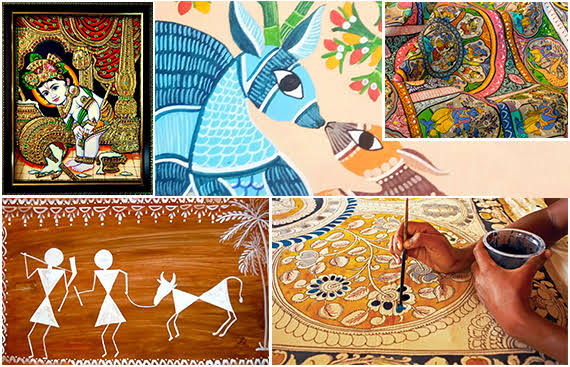Discovering India’s Hidden Gems: Lesser-Known Art Forms of the Country

India has a rich and diverse cultural heritage, with a plethora of art forms that have been passed down from one generation to the next. While some of these art forms have gained widespread recognition, there are many others that remain relatively unknown to the wider public. In this article, we will explore some of the lesser-known art forms of India.
Sattriya Dance: Sattriya is a classical dance form from the northeastern state of Assam. It originated in the monasteries of the Vaishnavite sect of Hinduism and is characterized by its fluid movements, intricate footwork, and graceful hand gestures.
Saura Painting – Saura Painting is an indigenous art form that originated in Odisha. The paintings are created using natural colors and showcase tribal life and culture. The paintings are characterized by geometric patterns and bold lines and are often used to decorate homes and public spaces.
Gond art: Gond art is a tribal art form from Madhya Pradesh. The paintings depict various themes like nature, mythology, and folklore. The art form is characterized by its intricate detailing, vibrant colors, and use of dots and lines to create patterns.
Pattachitra: Pattachitra is a traditional art form from Odisha that involves painting on a piece of cloth, usually made from cotton or silk. The paintings depict various stories and themes from Hindu mythology and are characterized by bright colors and intricate detailing.
Chhau Dance – Chhau Dance is a traditional dance form that originated in the eastern states of India. It involves elaborate masks, costumes, and acrobatic movements. The dance is usually performed during festivals and is a unique blend of martial arts, theater, and dance.
India is a land of diverse and rich cultural traditions, and it is home to numerous art forms that are waiting to be discovered. While some of these art forms have gained international recognition, there are many more that remain unknown to the wider world. By promoting and preserving these lesser-known art forms, we can ensure that our cultural heritage remains alive and thriving for generations to come. It is our responsibility to appreciate and respect these art forms and to encourage others to do the same. By doing so, we can celebrate the diversity and richness of Indian culture and contribute to its preservation and growth.
Pic Courtesy: google/ images are subject to copyright








